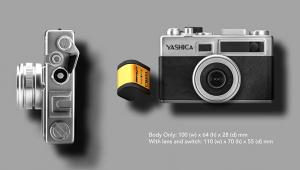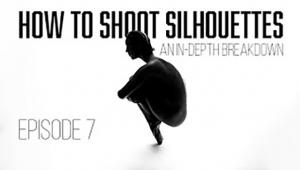7 Reasons You Still Need a Flash Bracket for Photography

The flash bracket has become the “forgotten accessory” in photography but it’s still an essential tool if you’re looking to achieve consistent studio-quality lighting on the fly.
For those not familiar with this workhorse device for event, wedding, and portrait photographers, when you mount a flash bracket to your camera it lets you position an electronic flash unit or a small continuous light source at a far greater distance from the camera’s lens axis than a typical built-in or shoe-mount flash. The result is lighting that’s inherently more attractive and natural looking, more even, and less harsh, though still pleasantly directional.
In short, it can make the difference between professional-looking photos and amateur hour. While flash brackets might not be the “sexiest” products on the photography market, they can be invaluable.
Below are seven reasons why you still need a flash bracket for photography. (And here are our recommendations for "8 Great Flash Brackets" to buy.)
1) They Reduce Red-Eye
Moving the flash away from the camera minimizes the dreaded red-eye effect, the bane of close-up portraits.
2) They’re Shadow Busters
Most flash brackets provide a pivoting adjustment that lets you position the flash head above the camera whether you’re holding the camera horizontally or vertically, so unpleasant, unnatural shadows don’t fall vertically on the subject.


3) Consistent Lighting without Stress
Flash brackets allow the photographer to achieve attractive, predictable lighting dialed in without having to physically hold the flash off camera or make adjustments in the field.

4) All-in-One Convenience
While they might look clunky, flash brackets are remarkably convenient. They put the camera and all necessary lighting equipment including the flash unit, and attachments like an umbrella or soft-box, in one place and under the photographer’s direct control, creating even and consistent lighting that allows you to concentrate on the subject.
5) They Save Money
Using a flash bracket is like having another hand, or person, on a shoot. Oftentimes, using a flash bracket will even eliminate the need for an assistant, which is an important economic consideration for pros looking to save money.
6) They Help You Concentrate on Shooting
The unique combination of advantages offered by a flash bracket allows the photographer to move from room to room without having to deal with the inevitable changes in ambient lighting, to work quickly and easily, and to focus on capturing expression, poses, and perfect moments more efficiently.

7) You Can Create a Mini, Mobile Studio
When used with a flash, plus an umbrella or soft-box, a flash bracket can provide, in effect, a portable mini-studio setup that delivers studio-quality lighting on the fly. Your clients and subjects will love the results and you’ll love how simple and inexpensive they are.
What Else Can a Flash Bracket Do For You?
These seven reasons (and a few more that I didn’t mention) are why virtually all wedding, events, and portrait photographers and many pros that shoot close-distance sports, still consider a good flash bracket to be essential gear. They’re also extremely versatile and can be pressed into service for covering family events, holiday celebrations, birthday parties, reunions, and kids at play, and they can be equally effective indoors and outdoors.
Flash brackets also provide all of the advantages mentioned when they’re mounted on a tripod, and this is an effective technique for shooting a series of portraits against a predetermined background, panning to cover an event, or shooting remotely from a fixed location.
Most flash brackets provide a standard tripod mounting socket or a quick-release mount that allows you to instantly detach the entire setup and move about freely to respond to picture opportunities.
When your flash unit is mounted on a flash bracket it’s no longer connected directly to the camera’s dedicated hot shoe, so you’ve got to provide a way to fire the flash when the shutter fires. Many pros use an electronic flash trigger and receiver unit to sync the camera and flash wirelessly. This eliminates dangling wires that can come loose, but it requires battery power.
That’s why many shooters opt for a simple, reliable dedicated TTL cord like those included with some flash brackets. Anyone searching the Internet forums for flash bracket reviews and recommendations by pros will find that certain brands—industry standards—always come up as the most popular choices.
Click here to read our recommendations of eight favorite flash brackets to choose from for your next assignment.
















































